Unpacking the magic of mushrooms and future of fungi
Curated by London editor Francesca Gavin, Mushrooms: The Art, Design and Future of Fungi is a new exhibition at Somerset House London featuring mycelium-inspired fonts, chairs and more
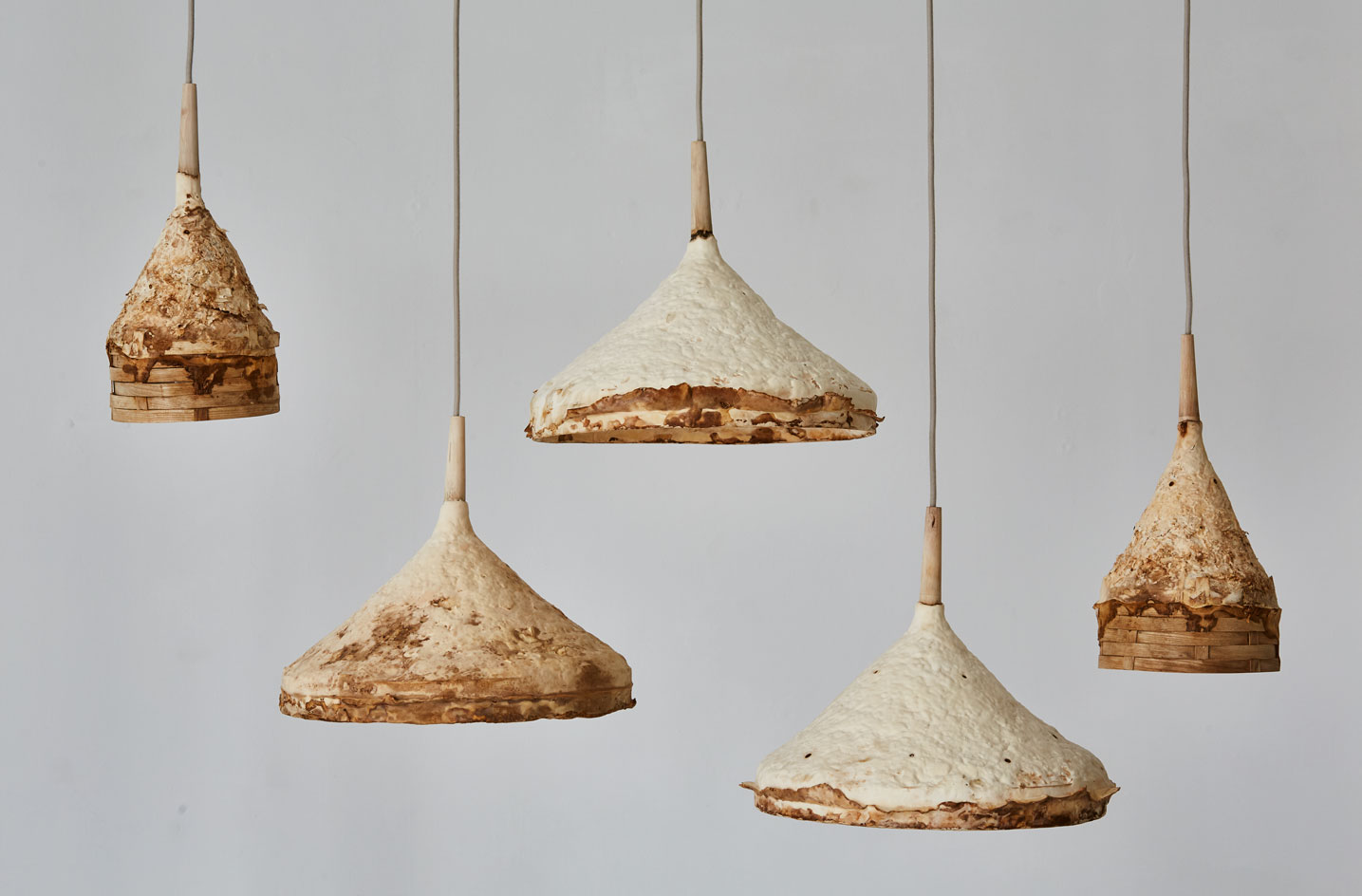
The humble toadstool has long been a source of inspiration for artists around the world. Its fleshy, bulbous form has inspired everyone from Beatrix Potter to Cy Twombly – even we explored its sartorial side in our December 2019 issue, but as a new show at Somerset House reveals, there’s much more to the mushroom than meets the eye.
Curated by London editor Francesca Gavin, Mushrooms: The Art, Design and Future of Fungi, is the result of Gavin’s own observations. ‘I kept noticing artists working with mushrooms,' recalls Gavin. ‘I read Anna L Tsing's The Mushroom at the End of the World quite soon after its first release and fell into a wormhole of mushroom facts. At this moment of climate crisis, treating something like mushrooms with respect and fascination feels more pressing than ever.'
Perhaps unsurprisingly, the show’s scope is broad, because as well as botany and art, mushrooms have more recently emerged in the fields of technology, architecture, science and even fashion. Visitors to Somerset House will encounter floral displays featuring mushrooms grown in venue’s former coalholes; artworks that span illustration, collage, sculpture, photography and film; thought-provoking furniture, and futuristic building materials all made from mycelium.
‘I like doing exhibitions that appeal to people beyond the art world, and mushrooms connect to people in such an accessible way,' says Gavin. ‘Without mushrooms ecosystems would fail. They are part of our own human microbiome.'
If people leave [the exhibition] learning a little bit about how much we need mushrooms, and by extension nature, to survive, then I'll be very happy.
The work of 35 artists, designers and musicians is split into three themes arranged across the venue’s three Terrace Rooms as part of a series of free public exhibitions sponsored by Charles Russell Speechlys. The themes Mycophilia, Magic Mushrooms and Fungi Futures were chosen by Gavin in what she describes as an attempt to ‘make sense of the mushroom'.
The exhibition’s first room houses Mycophilia, where the revival of interest in the mushroom is examined. With vitrines devoted to Alice in Wonderland and mushroom publications it shows how artists, both past and present, are working with mushrooms as a subject. The second room, Magic Mushrooms, shifts focus from the scientific to the psychedelic with John Cage and Lois Long's The Mushroom Book, a rare drawing by Takashi Murakami, and an enveloping surround-3D film by Adham Faramawy.
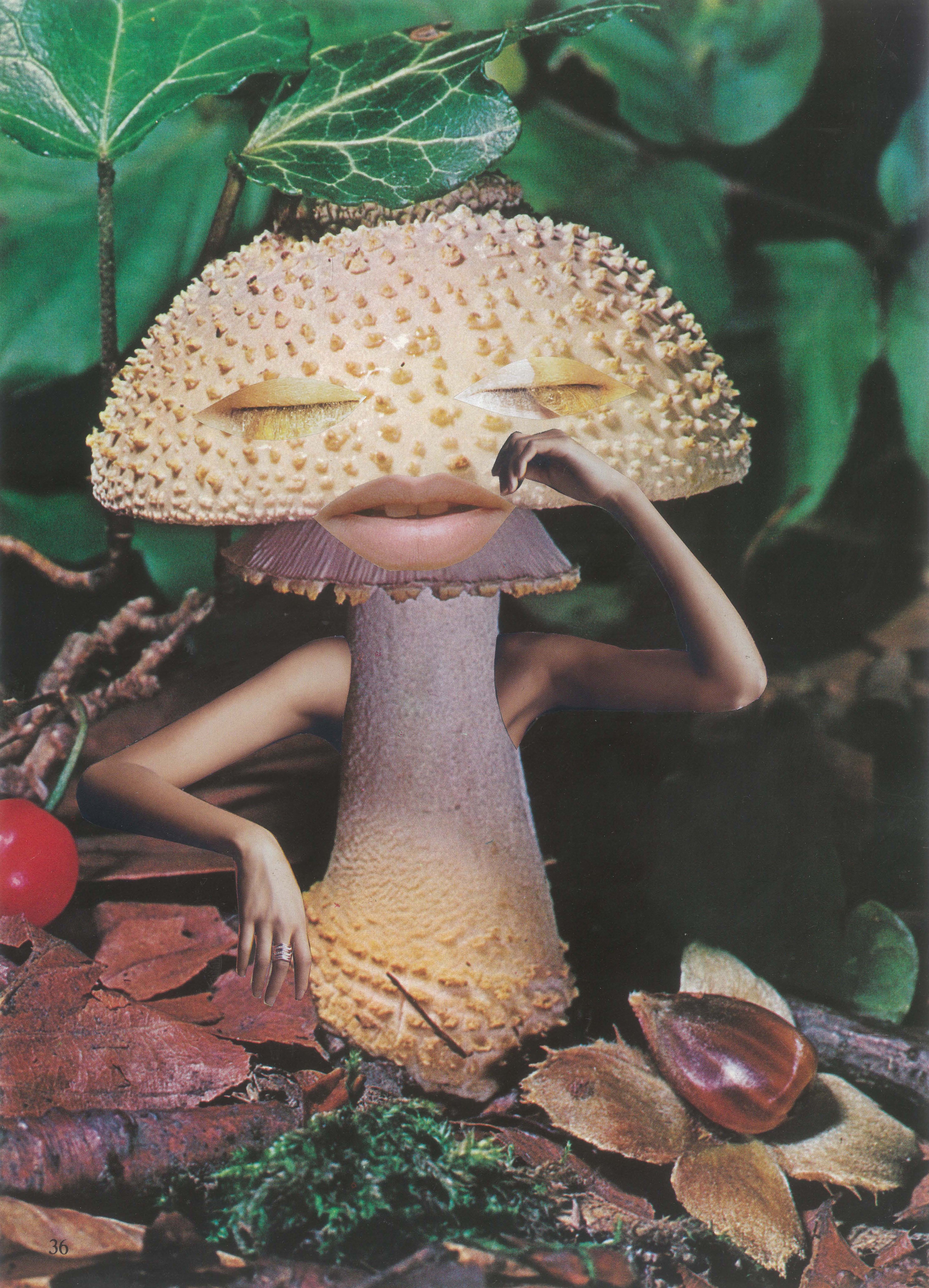
Mindful Mushroom, by Seana Gavin.
The third and final room houses Fungi Futures, which is devoted to design and innovation. Here we see how mushrooms are now being used as a material to create everything from lampshades by British designer Sebastian Cox and researcher Ninela Ivanova, a decomposable mushroom burial suit by Jae Rhim Lee to sculptural bricks developed by building material technologist Mae-Ling Lokko. A highlight is a specially-commissioned prototype chair by Tom Dixon, which was grown, ‘just in time' Gavin informs, from mycelium.
‘The aim of all three rooms is to highlight how we need to live symbiotically with nature,' says Gavin. ‘Artists and designers are always the first people to show some of the vital themes in contemporary life.’
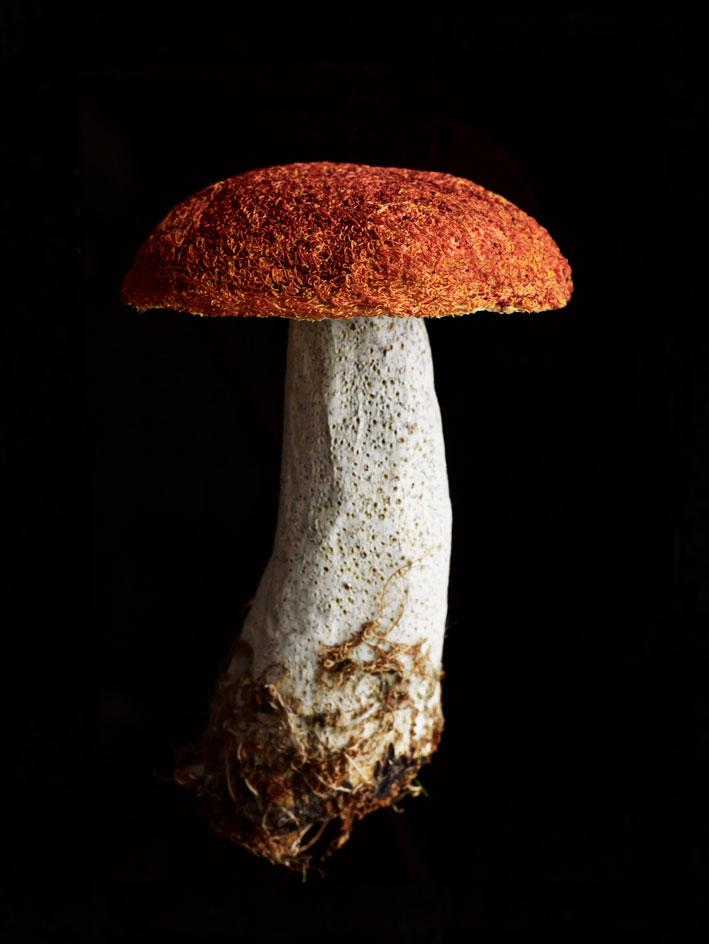
Fungi, by Amanda Cobbett. © Andrew Montgomery
‘Mycelium is being used for many things hard to illustrate in the show such as eating plastic, healing water and land from toxic waste,' she added. ‘I think those are the areas where fungi are becoming fundamental for our future existence.’
The show’s design, put together by Pentagram, plays on the Victorian’s scientific approach to museum display and classification. Rooms are organised by vinyl lines and facts about fungi are inserted into each thematic space. Pentagram has also worked with 3D artist Rosie Emery and creative studio Counterpoint to develop a mycelium-inspired font that is created using growth algorithms. Formed organically like fungi, the spore-like font has been used to create 3D-printed signage for each room as well as sculptures that appear to sprout out of the exhibition's walls and vitrines.
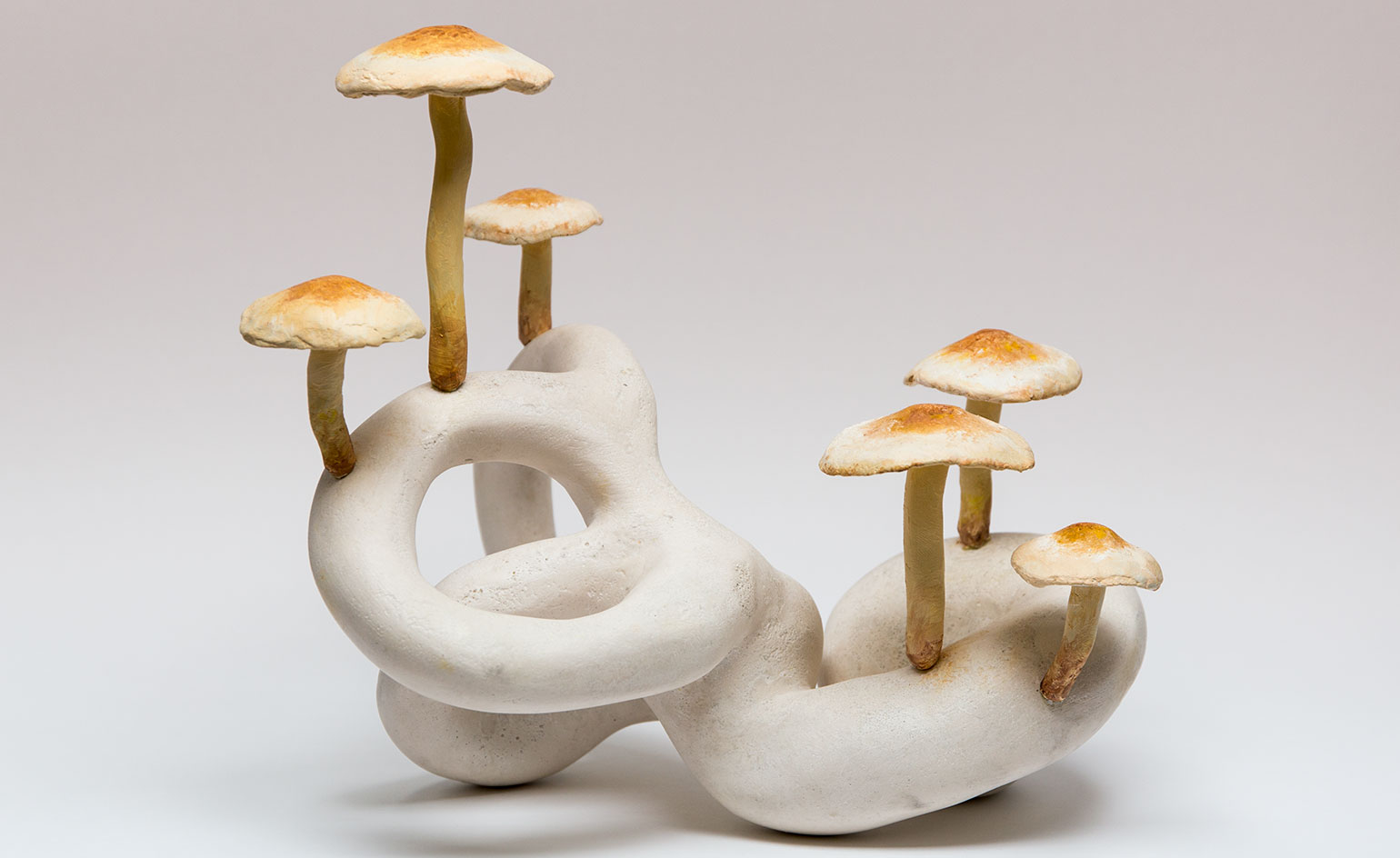
Cochlea Brick Tuft, by Hamish Pearch.
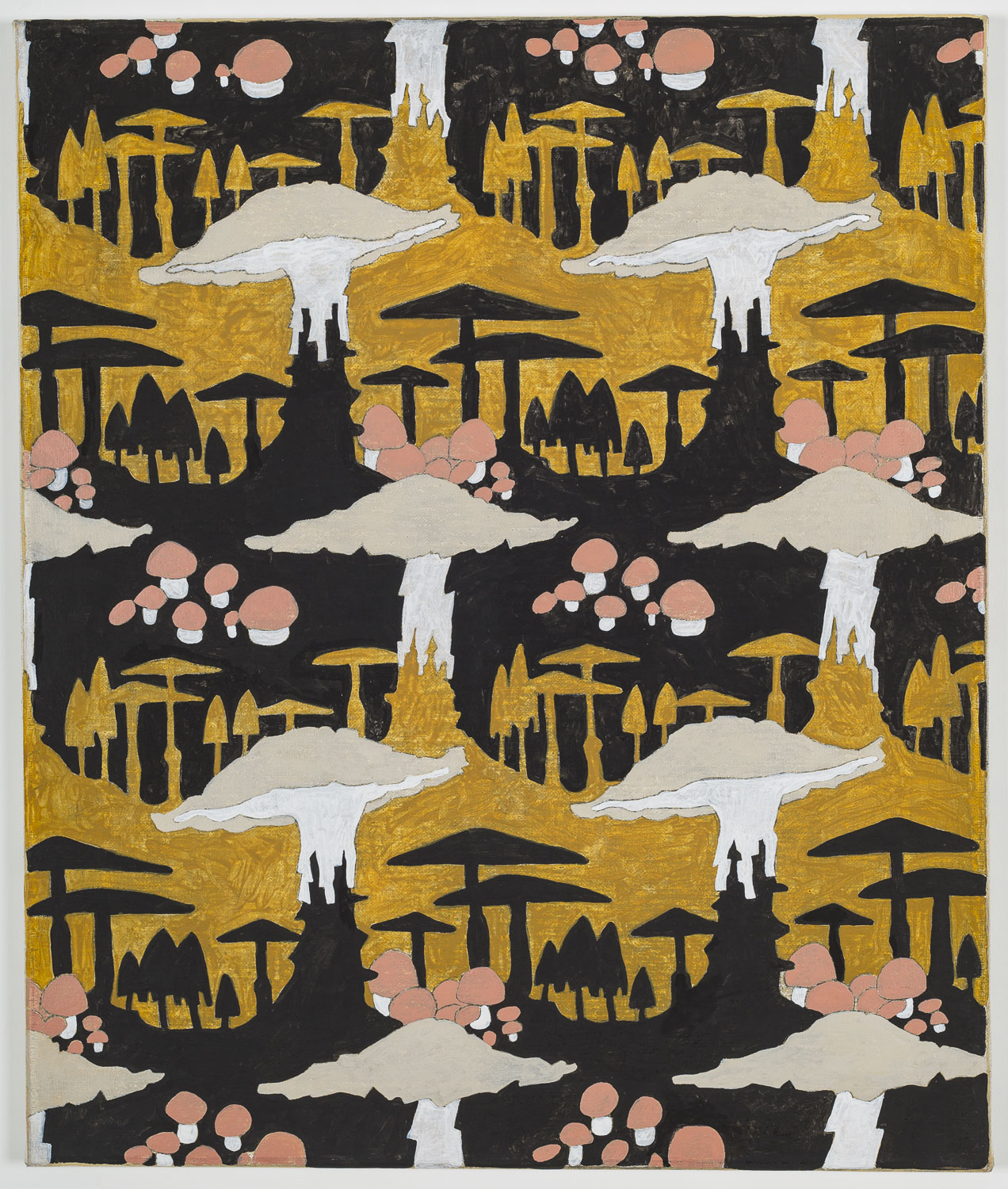
Mushroom Motif (Black and Ochre), 2017, by Alex Morrison.
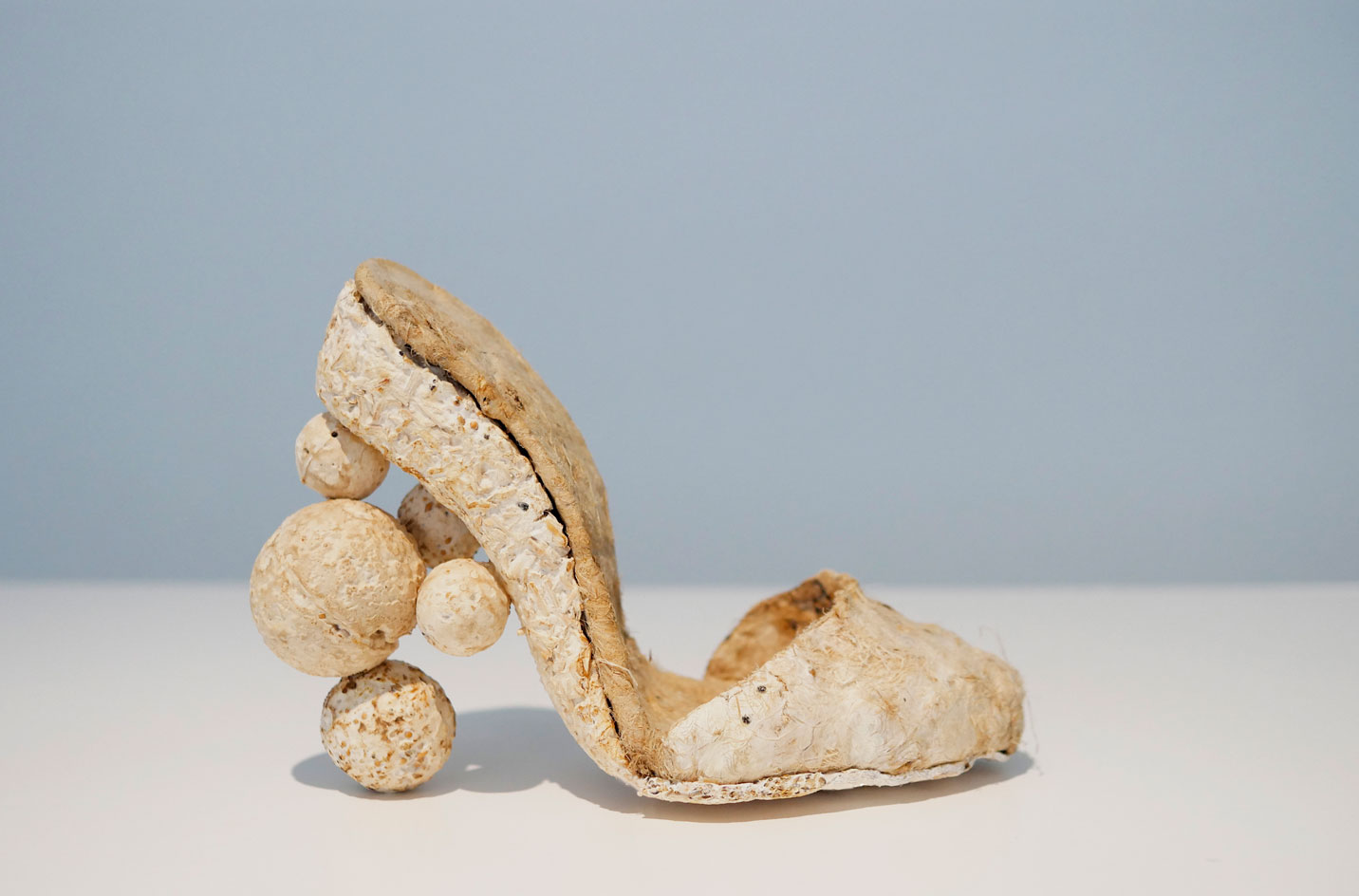
Mycoschoen, by Kristel Peters. Courtesy of the artist
INFORMATION
Mushrooms: The Art, Design and Future of Fungi, Somerset House, until 26 April
Wallpaper* Newsletter
Receive our daily digest of inspiration, escapism and design stories from around the world direct to your inbox.
ADDRESS
Somerset House,
Strand, London
WC2R 1LA
Ali Morris is a UK-based editor, writer and creative consultant specialising in design, interiors and architecture. In her 16 years as a design writer, Ali has travelled the world, crafting articles about creative projects, products, places and people for titles such as Dezeen, Wallpaper* and Kinfolk.
-
 Naoto Fukasawa sparks children’s imaginations with play sculptures
Naoto Fukasawa sparks children’s imaginations with play sculpturesThe Japanese designer creates an intuitive series of bold play sculptures, designed to spark children’s desire to play without thinking
By Danielle Demetriou
-
 Japan in Milan! See the highlights of Japanese design at Milan Design Week 2025
Japan in Milan! See the highlights of Japanese design at Milan Design Week 2025At Milan Design Week 2025 Japanese craftsmanship was a front runner with an array of projects in the spotlight. Here are some of our highlights
By Danielle Demetriou
-
 Tour the best contemporary tea houses around the world
Tour the best contemporary tea houses around the worldCelebrate the world’s most unique tea houses, from Melbourne to Stockholm, with a new book by Wallpaper’s Léa Teuscher
By Léa Teuscher
-
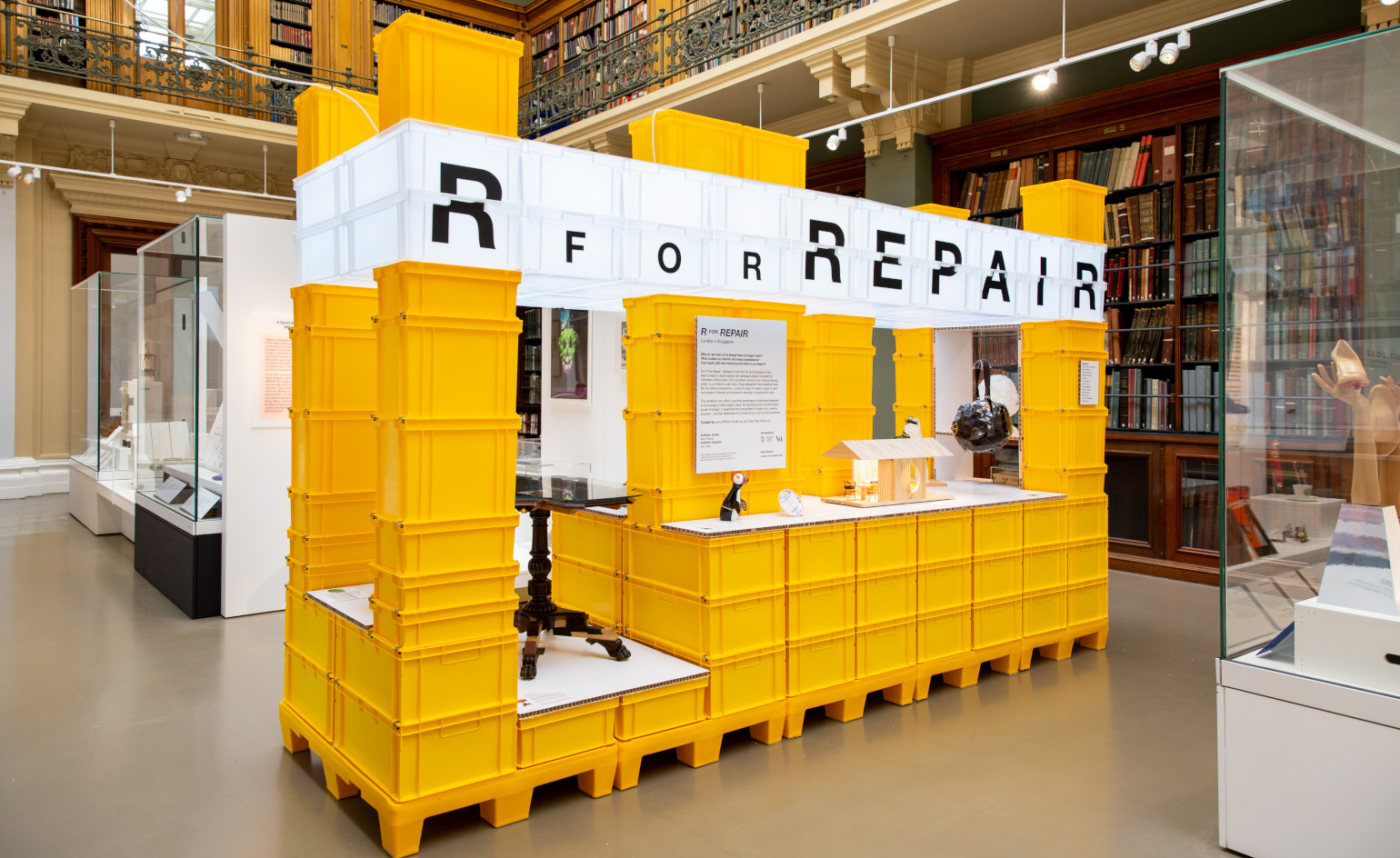 ‘R for Repair’ at London Design Festival displays broken objects, re-formed
‘R for Repair’ at London Design Festival displays broken objects, re-formedIn the second half of a two-part exhibition and as part of London Design Festival 2022, ‘R for Repair’ at the V&A displays broken objects, re-formed
By Martha Elliott
-
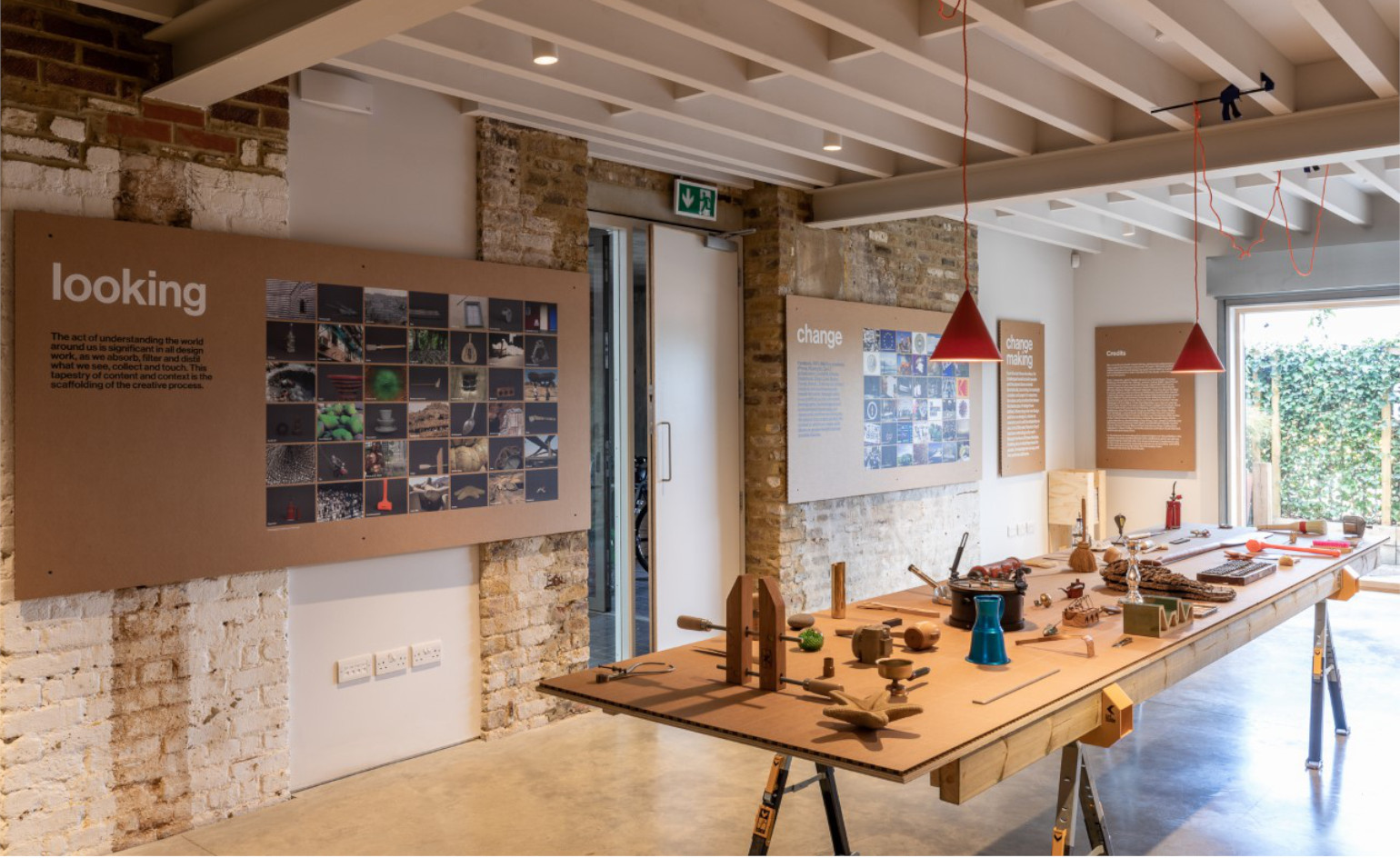 ‘Finding quality through the act of making’: Pearson Lloyd celebrates 25 years of design
‘Finding quality through the act of making’: Pearson Lloyd celebrates 25 years of designPearson Lloyd’s show ‘Change Making’ reflects on past designs from its archives, showcasing the influences on and evolution of the studio, from furniture design to the NHS
By Martha Elliott
-
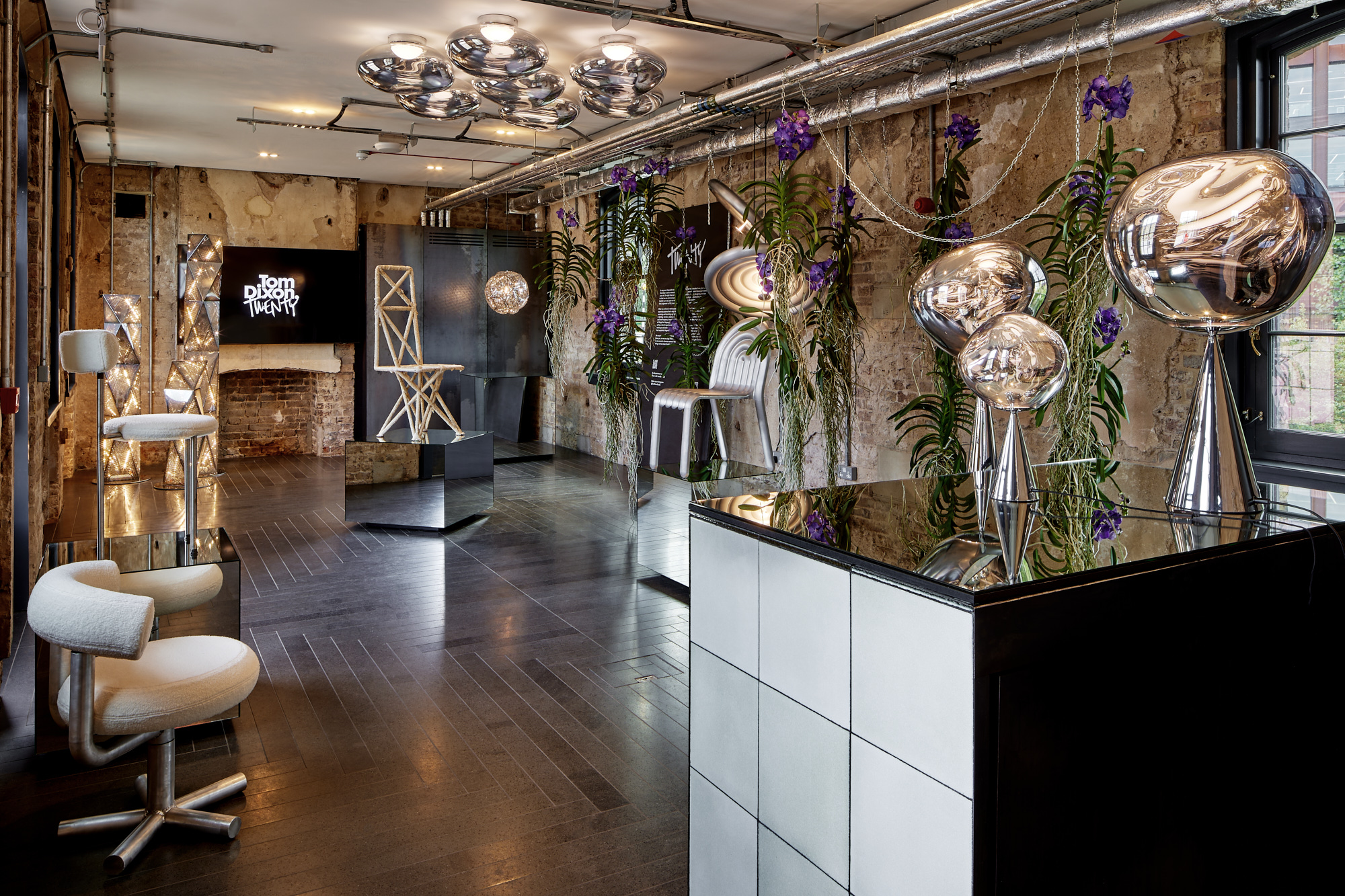 Tom Dixon marks his studio's 20 years with a show of design experiments
Tom Dixon marks his studio's 20 years with a show of design experimentsMushroom, cork, steel coral and more: Tom Dixon showcases an overview of his design experiments as he celebrates his practice's 20 years
By Rosa Bertoli
-
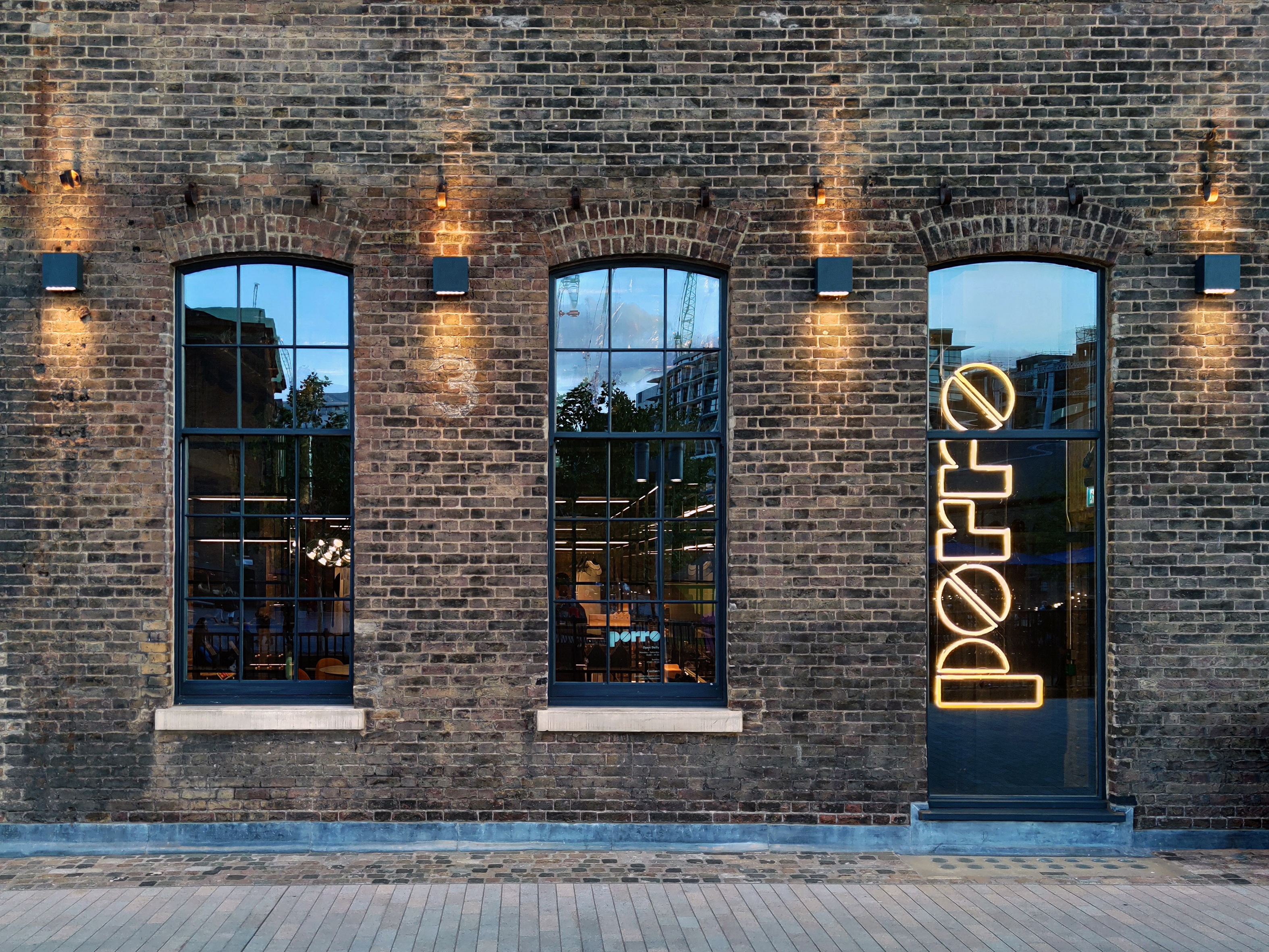 Porro unveils new London showroom at Coal Office
Porro unveils new London showroom at Coal OfficeLondon Design Festival 2022: industrial architecture meets pure geometries in the new Porro showroom, taking over a space within Tom Dixon’s Coal Office to showcase the brand’s systems and furniture
By Rosa Bertoli
-
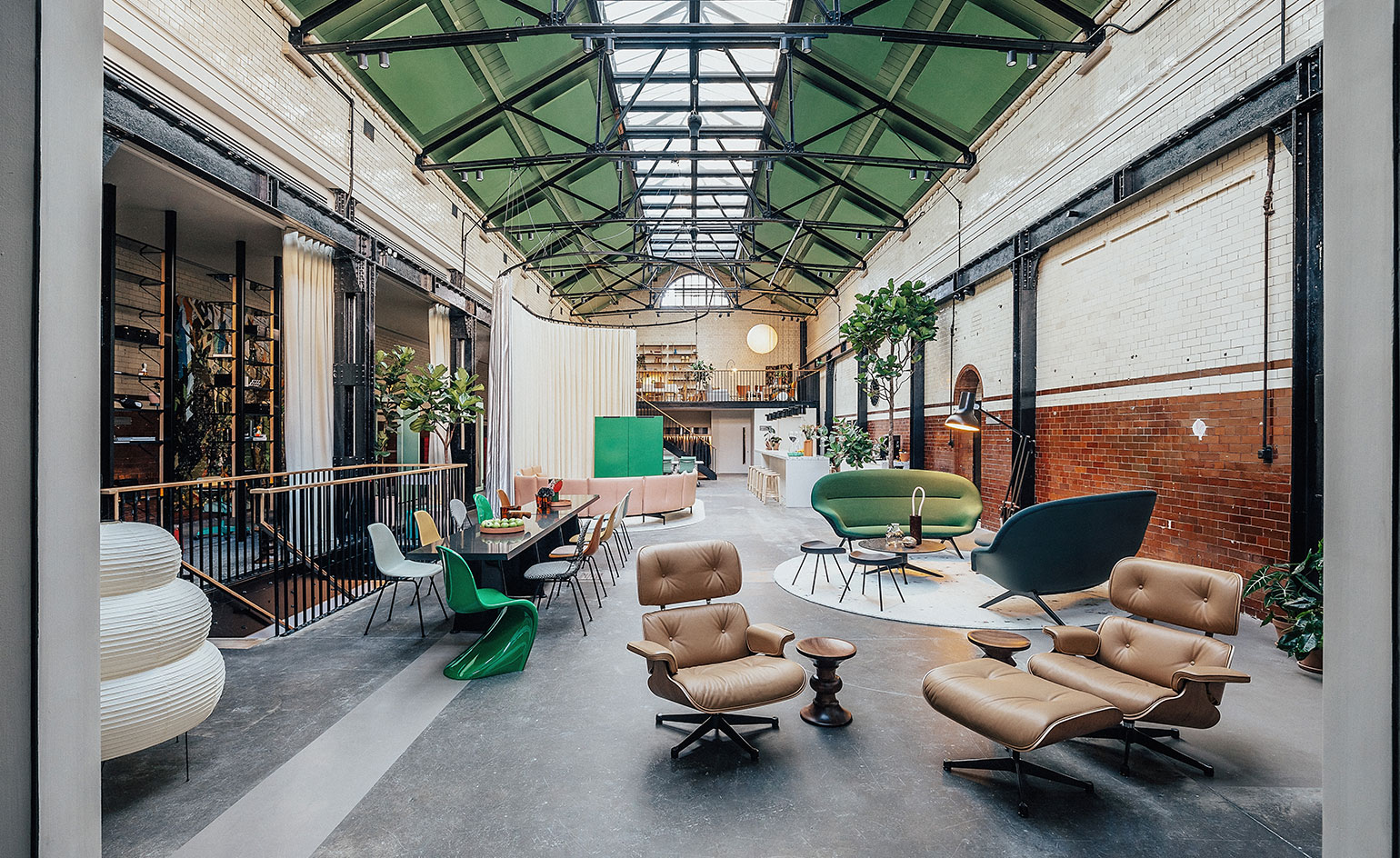 Vitra unveils new London home in the Tramshed, Shoreditch
Vitra unveils new London home in the Tramshed, ShoreditchLondon Design Festival 2022: after a year-long renovation, Vitra opens the door to its new showroom in the heart of Shoreditch
By Rosa Bertoli
-
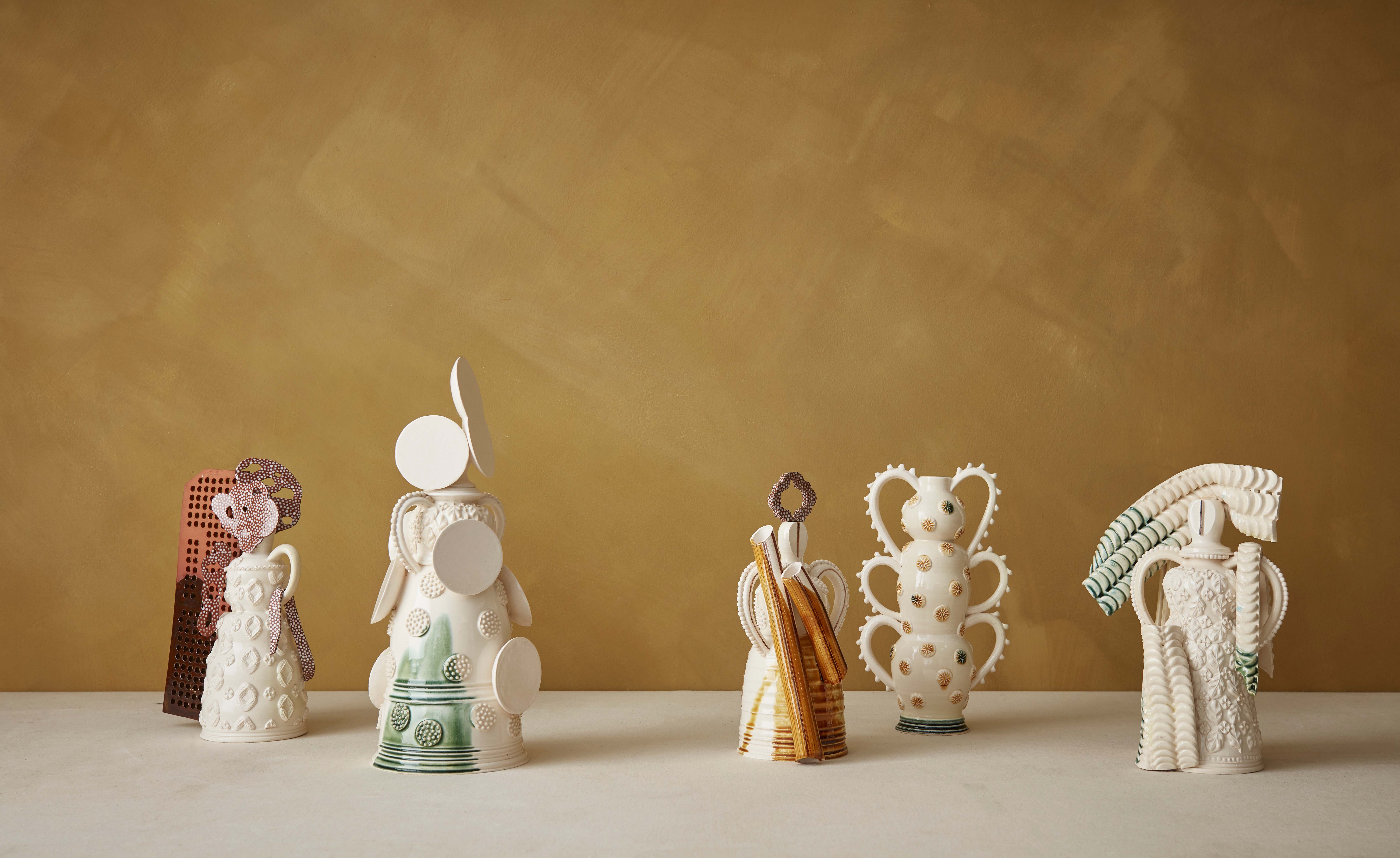 Mudlarking beside the River Thames inspires The New Craftsmen’s makers
Mudlarking beside the River Thames inspires The New Craftsmen’s makersLondon Design Festival 2022: The New Craftsmen’s new collection, ‘Claylarks’, features work from a group of creatives inspired by a River Thames mudlarking expedition
By Mary Cleary
-
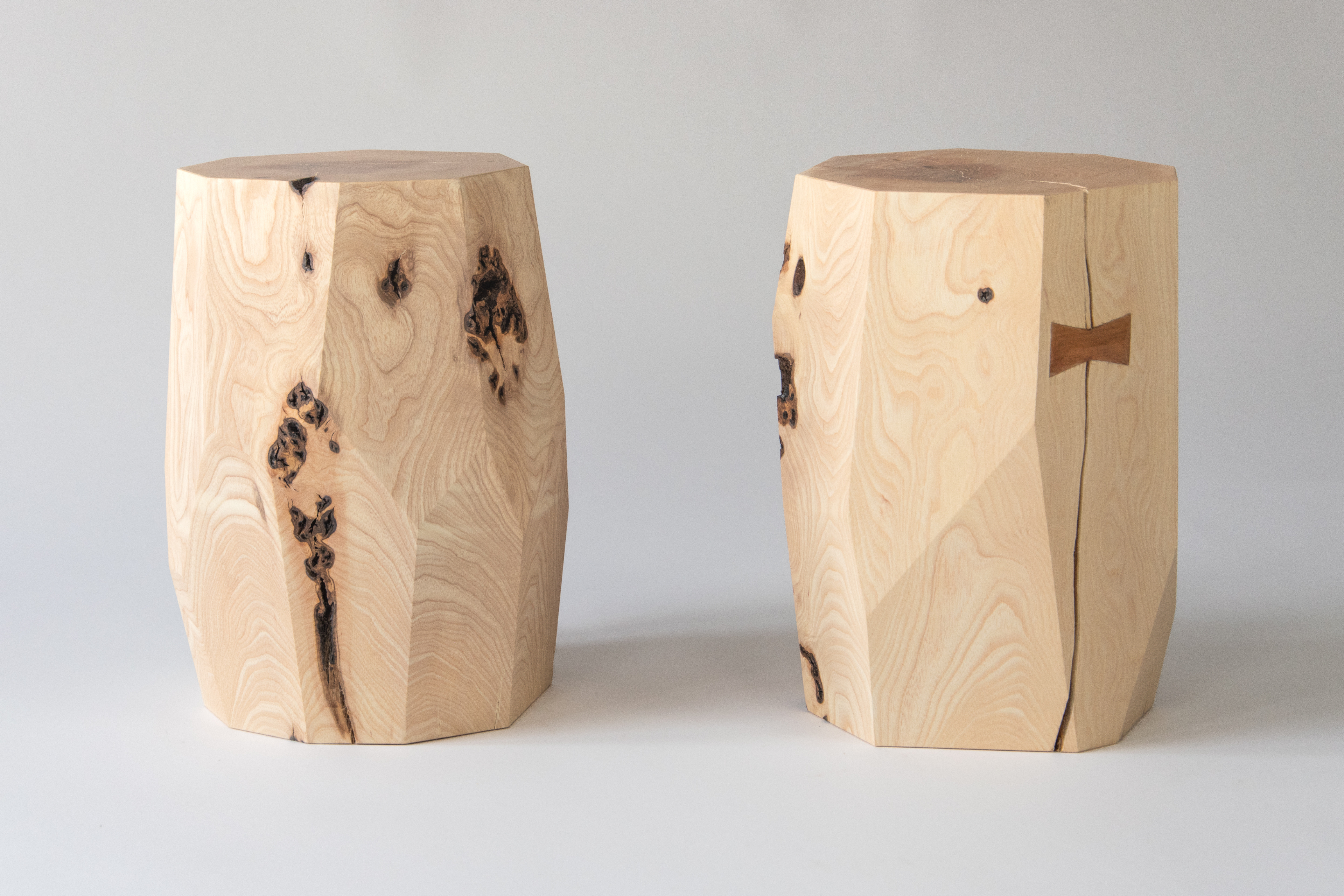 One tree, ten designers: SCP presents The One Tree Project at London Design Festival
One tree, ten designers: SCP presents The One Tree Project at London Design FestivalLondon Design Festival 2022: SCP enlisted ten British designers to create furniture and objects from a felled ash tree from founder Sheridan Coakley's Hampshire garden
By Francesca Perry
-
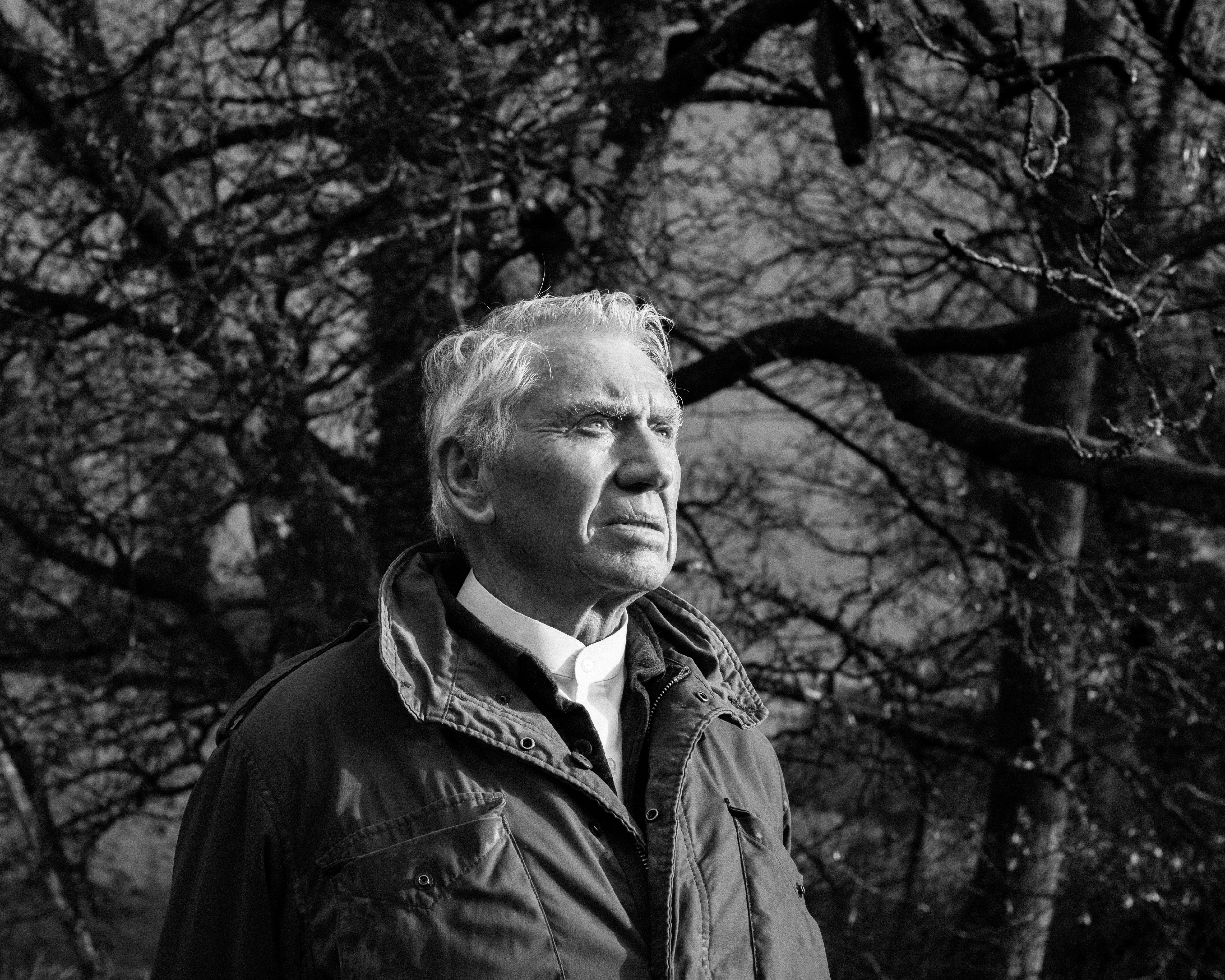 London Design Medals 2022
London Design Medals 2022London Design Medals 2022 are awarded to costume designer Sandy Powell, architect Indy Johar, researcher Joycelyn Longdon and photographer Sir Don McCullin
By Rosa Bertoli